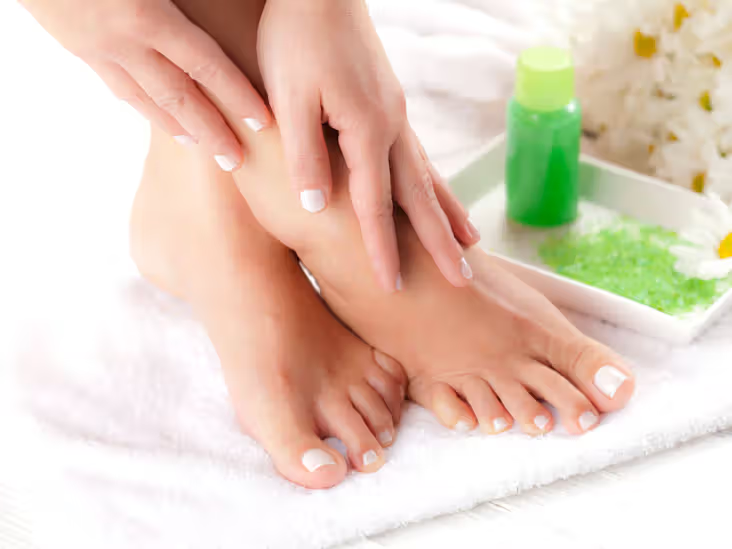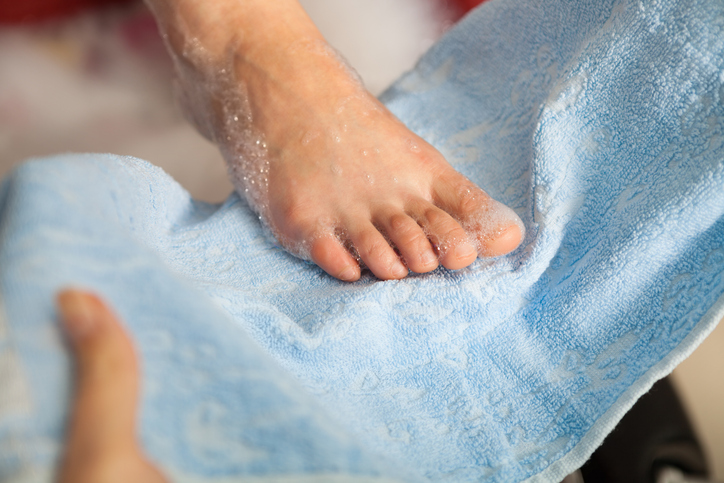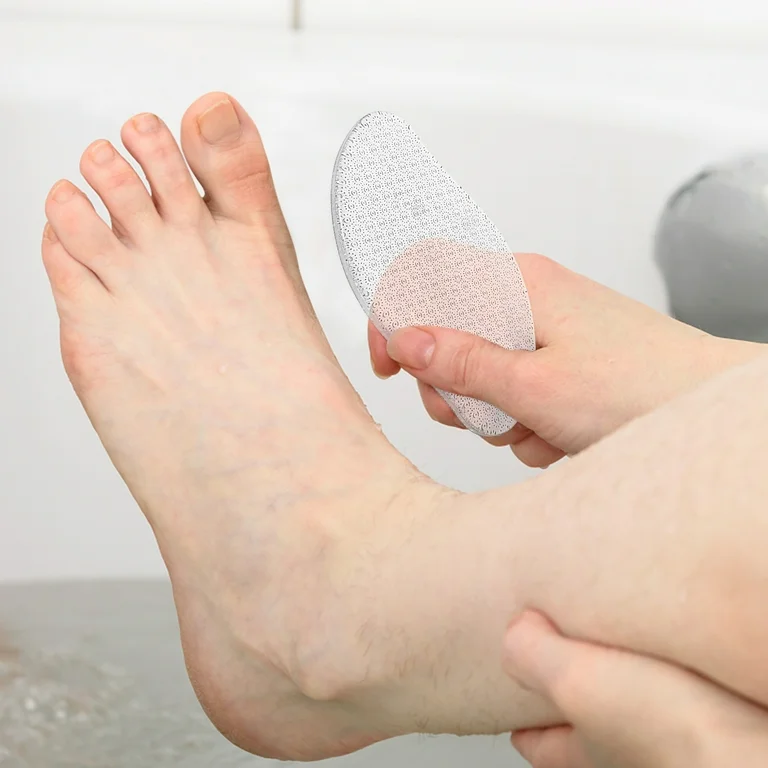Diabetic Foot Scrubbing: 7 Safety Tips for Healthy Feet (Guide 2025)
Discover essential safety considerations for diabetic foot scrubbing. Learn expert tips to prevent injuries, maintain foot health, and enhance your diabetes care routine.
Did you know that for people with diabetes, a simple foot scrubbing routine can be a potential health hazard? As someone who’s closely followed the intersection of diabetes care and foot health, I’ve seen firsthand how crucial it is to approach diabetic foot scrubbing with caution.
Living with diabetes often means paying extra attention to seemingly routine tasks. When it comes to foot scrubbers, safety isn’t just a recommendation, it’s a necessity. Diabetes can lead to reduced sensation in the feet, making it easier to accidentally cause damage during scrubbing. That’s why I’m diving into the essential safety considerations for using foot scrubbers when you have diabetes.
In this text, I’ll guide you through the dos and don’ts of foot scrubbing for diabetics, helping you maintain healthy feet without compromising your overall well-being. From choosing the right tools to mastering gentle techniques, we’ll explore how to keep your feet in top shape while managing diabetes.
Understanding Diabetic Foot Care
Diabetic foot care requires careful attention and exact safety measures. Proper management of foot health is crucial for individuals with diabetes to prevent complications and maintain overall well-being.
Risks of Foot Problems in Diabetes
Diabetes significantly increases the risk of foot-related issues due to two primary factors: nerve damage (neuropathy) and reduced blood flow. Neuropathy can cause a loss of sensation in the feet, making it difficult to detect minor injuries like cuts, blisters, or sores. These unnoticed wounds can quickly escalate into serious infections or ulcers. Poor blood circulation further complicates matters by slowing down the healing process, increasing the risk of infections and, in severe cases, potentially leading to amputations.
Importance of Proper Foot Care
Implementing a comprehensive foot care routine is essential for managing diabetes effectively. Daily foot inspections are critical to identify any changes or potential problems early. I recommend checking your feet every day for cuts, blisters, redness, swelling, or nail issues.
Proper hygiene, including gentle washing and thorough drying, helps prevent infections. Moisturizing (avoiding between the toes) keeps skin healthy and prevents cracking. Wearing well-fitting shoes and socks protects feet from injury and promotes good circulation.
Choosing the Right Foot Scrubber
Selecting an appropriate foot scrubber is crucial for individuals with diabetes to maintain foot health safely. I’ll guide you through the essential factors to consider when choosing a foot scrubber that’s gentle on diabetic skin.
Safe Materials for Diabetic Skin
When selecting a foot scrubber for diabetic skin, it’s vital to opt for materials that are gentle and non-abrasive. I recommend choosing scrubbers made from soft, pliable materials like silicone or natural pumice stone. These materials are less likely to cause cuts or scratches on sensitive diabetic skin.
Avoid scrubbers with rough surfaces or sharp edges that could potentially damage the skin. It’s also important to regularly clean and disinfect your foot scrubber to prevent bacterial growth and reduce the risk of infection. Look for scrubbers labeled as “diabetic-friendly” or “safe for sensitive skin” to ensure you’re getting a product designed with your exact needs in mind.
Appropriate Textures and Designs
The texture and design of a foot scrubber play a important role in its safety and effectiveness for diabetic individuals. I recommend choosing scrubbers with gentle, rounded textures that provide mild exfoliation without risking skin damage. Soft-bristled brushes or scrubbers with fine, even textures are excellent options.
Avoid scrubbers with sharp points or overly rough surfaces that could accidentally cut or irritate the skin. Look for designs that are easy to grip and maneuver, as this can help prevent accidental slips or excessive pressure during use. Some foot scrubbers come with long handles, which can be beneficial for those with limited mobility or difficulty reaching their feet.
Proper Use of Foot Scrubbers
Proper foot scrubber use is crucial for individuals with diabetes to maintain foot health safely. When selecting and using foot scrubbers, it’s essential to prioritize gentle tools and techniques to prevent complications.
Gentle Techniques for Diabetic Feet
When using foot scrubbers for diabetic feet, gentle techniques are paramount. I recommend using soft, circular motions with minimal pressure to avoid causing harm to sensitive skin. It’s crucial to focus on areas with calluses or dry skin, but always err on the side of caution. If you encounter any resistance or discomfort, stop immediately. Remember, the goal is to remove dead skin cells gently, not to achieve perfectly smooth feet at the risk of injury.
Frequency and Duration of Scrubbing
For individuals with diabetes, I advise limiting foot scrubbing to once or twice a week, with each session lasting no more than 2-3 minutes per foot. Overuse of foot scrubbers can lead to skin irritation or damage, especially in those with reduced sensation. It’s essential to monitor your feet closely after each scrubbing session for any signs of redness, irritation, or breaks in the skin. If you notice any unusual changes, consult your healthcare provider promptly to prevent potential complications.
Hygiene and Infection Prevention
Maintaining proper hygiene and preventing infections are crucial aspects of foot care for individuals with diabetes. These practices help reduce the risk of complications and promote overall foot health.
Cleaning and Sanitizing Foot Scrubbers
Foot scrubbers used by diabetics require thorough cleaning and sanitization after each use. I recommend rinsing the scrubber with hot water and mild soap, then air-drying it completely to prevent bacterial growth. For deeper cleaning, soak the scrubber in a mixture of water and vinegar for 30 minutes once a week. Replace foot scrubbers every 3-4 months or sooner if they show signs of wear. Avoid sharing foot scrubbers with others to minimize the risk of cross-contamination and potential infections.
Maintaining a Sterile Environment
Creating a sterile environment for foot care is essential for diabetics. I advise washing hands thoroughly with antibacterial soap before and after foot care routines. Use clean towels or disposable wipes for drying feet, and avoid walking barefoot, especially in public areas. Keep the foot care area clean by disinfecting surfaces regularly. Store foot care tools in a dry, clean container to prevent contamination. Consider using disposable pedicure tools for added safety. Always inspect the area for potential hazards before starting your foot care routine.

Monitoring Skin Health
Daily skin health monitoring is crucial for individuals with diabetes to prevent complications. I’ll explain essential practices for maintaining healthy feet and detecting potential issues early.
Checking for Abrasions and Wounds
I recommend inspecting your feet daily for any signs of cuts, blisters, redness, swelling, or changes to the skin or nails. Use a mirror to examine the bottom of your feet if needed, or ask a family member for assistance. It’s important to moisturize your feet with lotion or petroleum jelly to prevent cracking, but avoid applying it between the toes to reduce the risk of fungal infections. When bathing your feet, use lukewarm water and a soft washcloth or sponge. Thoroughly dry your feet afterward, especially between the toes, to prevent moisture buildup that can lead to infections.
Assessing Circulation and Sensation
I emphasize the importance of regularly assessing circulation and sensation in your feet. Check for any changes in skin color, temperature, or texture, which could indicate circulation issues. To test sensation, gently run a soft object like a cotton ball along different parts of your feet. If you notice any numbness or reduced sensitivity,
it’s crucial to consult your healthcare provider. Also, pay attention to any persistent pain, tingling, or burning sensations in your feet, as these could be signs of nerve damage. Regular foot exercises, such as wiggling your toes and rotating your ankles, can help promote blood flow and maintain sensation.

When to Avoid Foot Scrubbing
Foot scrubbing requires caution for individuals with diabetes. Certain situations demand abstaining from this practice to prevent complications and maintain foot health.
Recognizing High-Risk Situations
Avoid foot scrubbing if you have infections, cuts, or open sores on your feet. These conditions increase vulnerability to further damage and infection. If you have neuropathy, a type of nerve damage causing loss of sensation in the feet, exercise extreme caution.
Neuropathy makes it challenging to detect injuries caused by scrubbing, potentially leading to unnoticed cuts or abrasions that can escalate into serious infections or ulcers. Also, refrain from scrubbing if you notice any signs of poor circulation, such as discolored or cold skin, as this can impair healing and increase the risk of complications.
Alternative Foot Care Methods
When foot scrubbing isn’t safe, consider gentler alternatives. Use a soft washcloth or sponge with mild soap to clean your feet daily. Pat them dry thoroughly, paying special attention to the areas between your toes. Apply a diabetes-friendly moisturizer to prevent dryness and cracking, but avoid putting it between your toes.
Carry out a daily foot inspection routine using a mirror to check for any changes or signs of injury. If you notice any concerns, consult your healthcare provider promptly. Regular foot massages can help improve circulation and maintain skin health without the risks associated with scrubbing.
Professional Guidance
Professional guidance is crucial for diabetics using foot scrubbers. Seeking expert advice ensures safe and effective foot care practices customized to individual needs.
Consulting Healthcare Providers
I recommend diabetics consult their healthcare providers before incorporating foot scrubbers into their routine. A podiatrist or diabetes specialist can assess foot health, neuropathy levels, and circulation issues. They’ll provide personalized recommendations on suitable scrubbing techniques and frequency.
Healthcare providers can also identify potential risks and contraindications based on the individual’s medical history. Regular check-ups with these professionals allow for ongoing monitoring and adjustments to foot care practices as needed.
Incorporating Foot Care into Diabetic Foot Scrubbing
I emphasize integrating foot care, including proper scrubber use, into overall diabetes management. Diabetics should work with their healthcare team to develop a comprehensive foot care plan. This plan typically includes daily foot inspections, proper hygiene practices, and appropriate scrubbing techniques.
It’s essential to coordinate foot care with blood sugar management, as fluctuations can affect skin health and healing. Diabetics should track and report any changes in foot condition to their healthcare provider promptly. Regular diabetes education sessions often include foot care instruction, helping patients stay updated on best practices.
Conclusion
Proper foot care is crucial for those with diabetes. By following these safety guidelines when using foot scrubbers you’ll minimize risks and maintain healthy feet. Remember to choose gentle tools stay vigilant for any changes and consult your healthcare provider regularly. With the right approach foot care can become an integral part of your diabetes management routine. By prioritizing your foot health you’re taking a important step towards overall well-being and reducing potential complications associated with diabetes.

